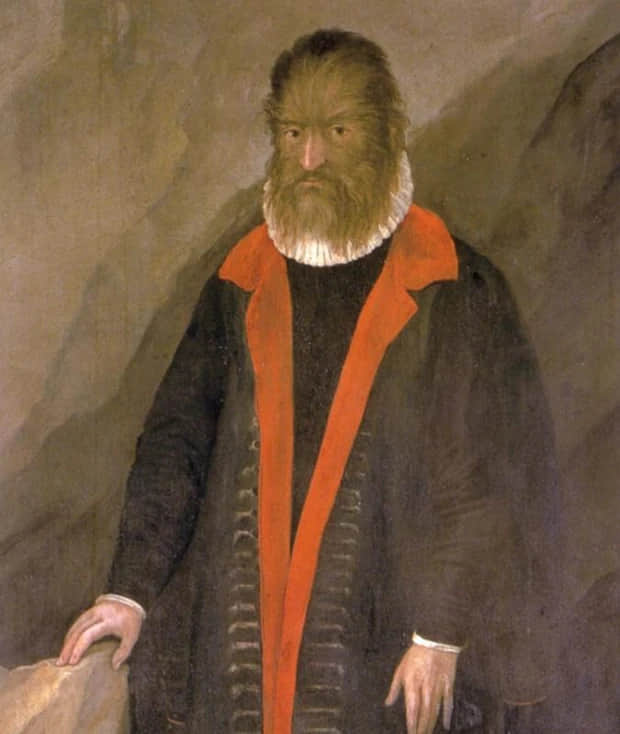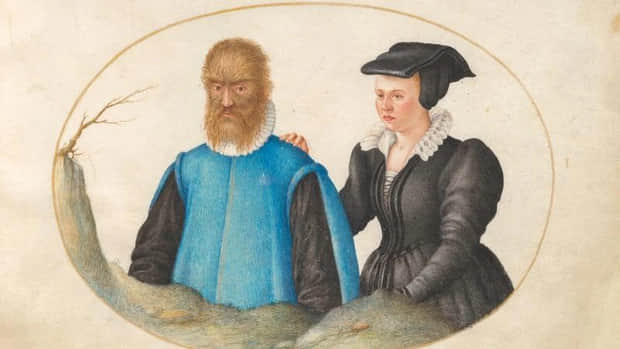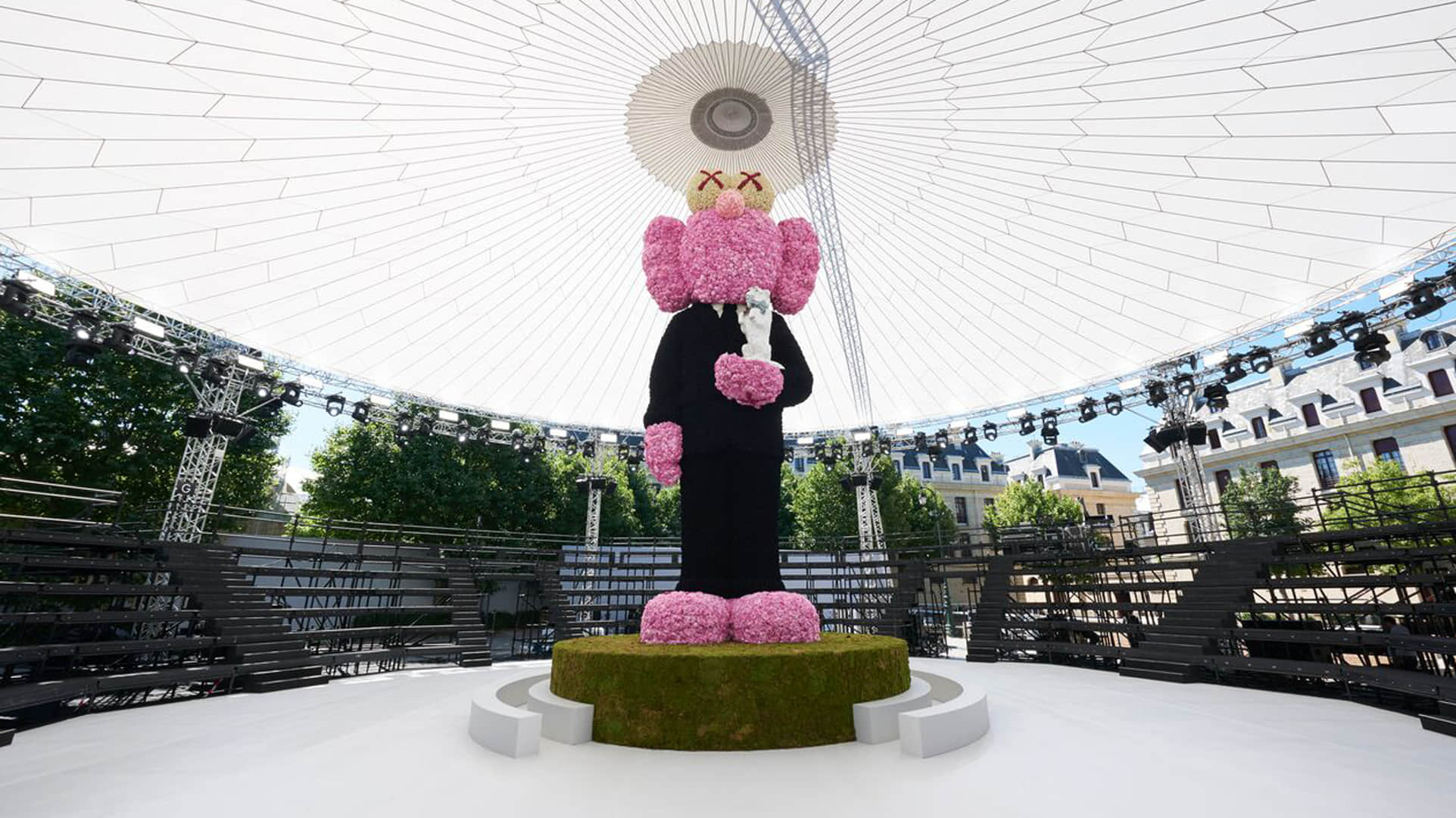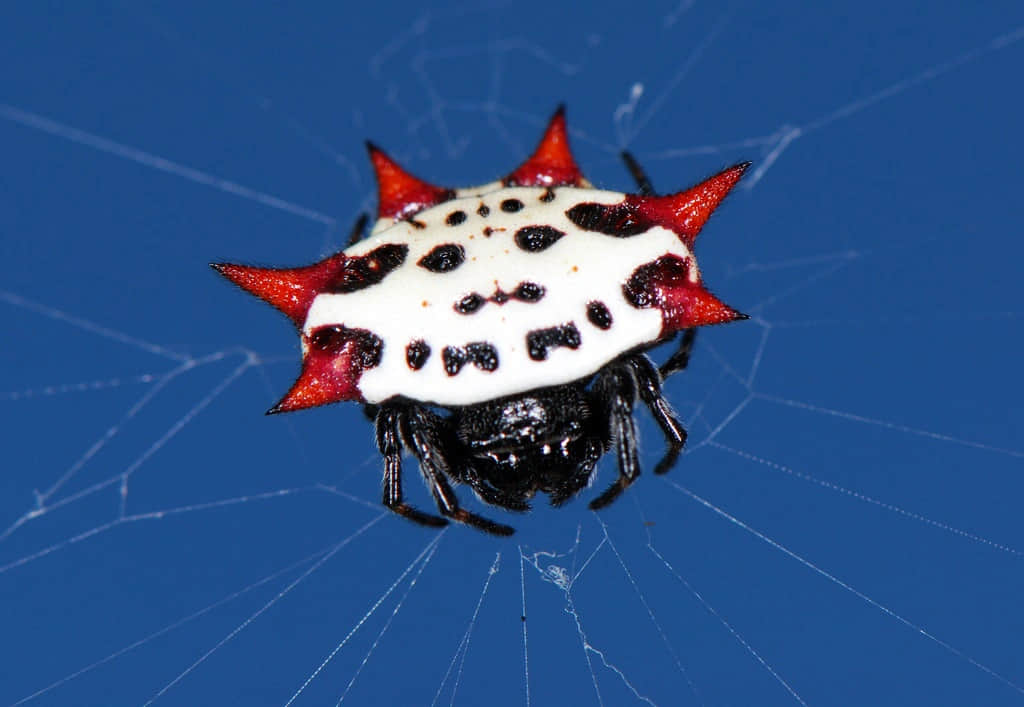The romantic story between Bella and the Monster must be familiar to many viewers who love Disney cartoons. The movie is based on a true story, but this version is much darker than we thought.
The real-life “Monster” is named Petrus Gonsalvus, born in 1537 in the Canary Islands (Spain). Petrus has hereditary hypertrichosis, also known as “Werewolf” syndrome.
In the world, only about 100 cases of this disease have been discovered, and Petrus is the first among them.

This rare genetic mutation causes Petrus’s face and body to be covered with a thick layer of hair, looking like a werewolf in legend. That caused Petrus’s life to fall into tragedy because he was not treated like a normal person.
When he was only 10 years old, Petrus was locked in a cage and sent to France as a gift to King Henry II on the day of his coronation. The boy was imprisoned in a dungeon for everyone to see and was treated like a barbaric animal.
But after a period of observation, doctors found that Petrus was a completely normal boy and showed no animalistic behavior. Therefore, King Henry decided to let the “Werewolf” live a noble life – well-fed, well-dressed and well-educated. Just like that, Petrus’ education became very erudite, proficient in 3 languages including French, Latin and Greek.

With the ability to communicate fluently in three languages, Petrus became an important member of the royal family when helping the king receive guests and foreign nobles. He was still treated like a strange creature, but nonetheless lived in peace.
Petrus’ life remained peaceful until Queen Catherine de’ Medici took over as regent in place of the deceased king. Catherine wondered if “The Werewolf” got married and had children, would there be “wolf cubs”? To test this, she decided to marry Petrus.

Catherine de’ Medici finally found a wife for Petrus, coincidentally her name was also Catherine. The surprising thing is that “The Werewolf” and his wife have lived happily together for 40 years and have 7 children together. Just like in the fairy tale, the girl loved the Monster’s sincerity no matter what his appearance was.
Unfortunately, the “Werewolf”‘s five children all suffered from their father’s genetic disease. Faced with Queen Catherine’s malice, Petrus’ family had to parade around palaces across Europe to entertain the nobility.
Although they dress luxuriously and elegantly, in reality, they are no different from circus animals, exploited to become entertainment and studied by scientists everywhere. Worse, the furry children were sent away as gifts to other nobles.

Petrus and his wife, after experiencing the pain of family separation, left France and moved to live quietly in Italy. They lived together for the rest of their lives, an extremely monotonous and simple life. Perhaps after all, this is the happy ending for “Beauty and the Beast” in real life.
French author Gabrielle-Suzanne de Villeneuv was deeply moved by Petrus’s story. She took Petrus and his wife as the main characters and wrote the novel “La Belle et la Bête” in 1740, which is also the version of the story “Beauty and the Beast” that we still know today.





